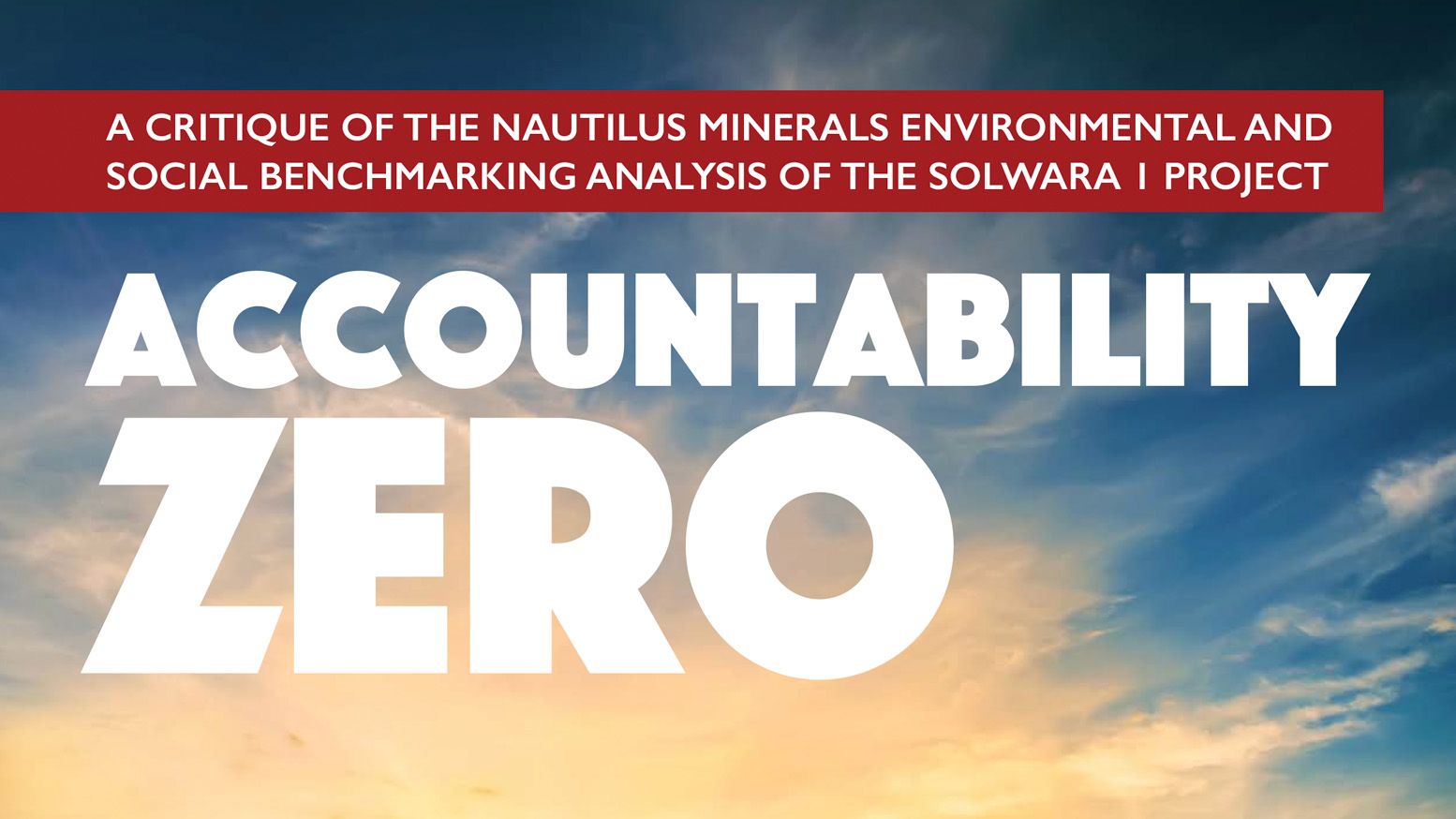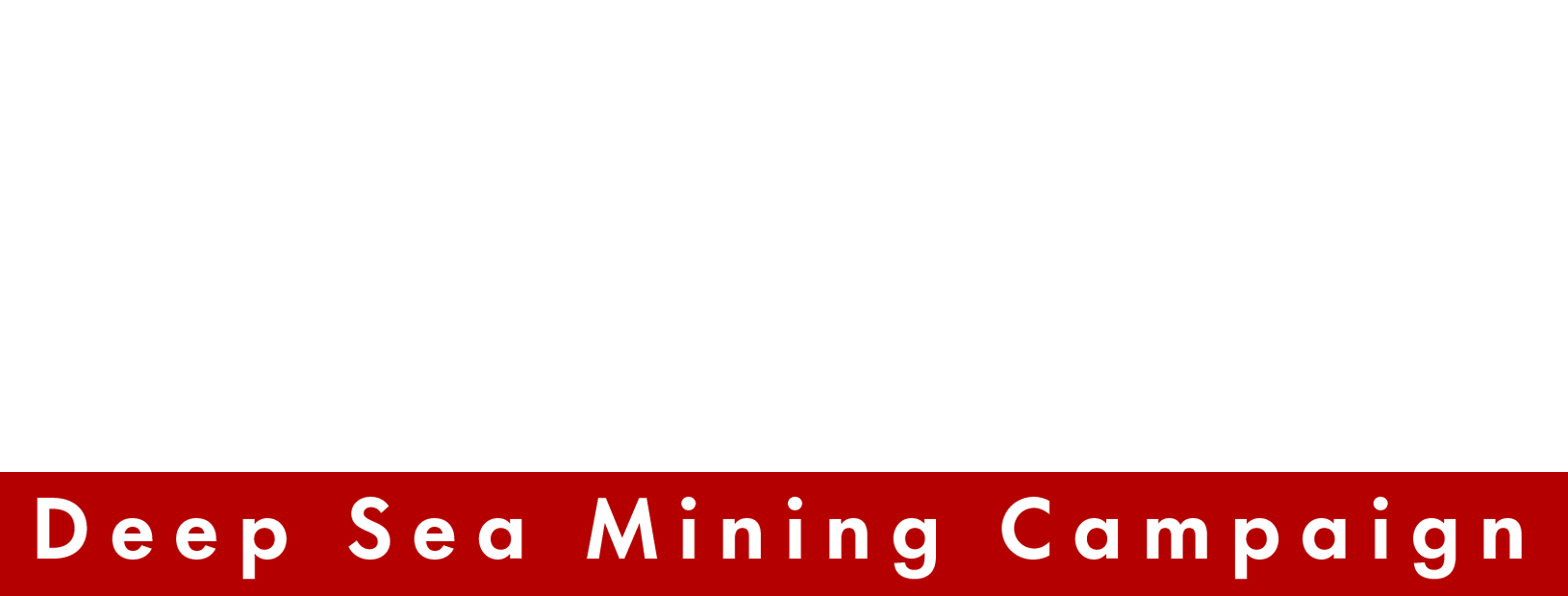Accountability Zero

In 2015, DSMC collaborated with Economists at Large, Earthworks, MiningWatch Canada and Oasis Earth to produce Accountability Zero: A Critique of Nautilus Minerals Environmental and Social Benchmarking Analysis of the Solwara 1 project.
The report critiqued the Nautilus Minerals Environmental and Social Benchmarking Analysis (ESBA) revealing its indefensible flaws.
It found that the ESBA uses metrics that bear no relevance to deep sea and marine environments and failed the accepted requirements of a cost-benefit analysis. Thus the ESBA failed to provide a framework to assist decisions about the advisability of the Solwara 1 DSM project in Papua New Guinea or of any other DSM project.
OVERVIEW OF REPORT
Canadian mining company Nautilus Minerals Inc. (Nautilus) is set to embark on the unprecedented extraction of metals from the sea floor. The mining project, known as the Solwara 1 project, will extract gold and copper from the floor of the Bismarck Sea in Papua New Guinea. It is the first of a potentially large number of deep sea mining projects within the Bismarck Sea and the wider Pacific Region.
The focus of deep sea mining (DSM) is the deposits laid down over thousands of years around underwater hot springs, or hydrothermal vents. Nautilus has secured or is in the process of applying for the exploration rights to 534,000 km2 of the sea floor in PNG, Tonga, the Solomon Islands, Fiji and New Zealand. Many other companies are waiting to see how Nautilus fares before taking the plunge themselves.
Being the world’s first commercial DSM operation, there is a high level of uncertainty about the risks posed to marine environments and communities. What is certain is that impacts will be associated with each step of the mining process.
Seafloor volcanic systems, deep sea ecosystems and the spread of pollution from deep sea mining are not well understood. Thus, it’s not possible to predict the impacts of any individual DSM project, let alone the cumulative impacts of the many DSM projects proposed for the Bismark Sea and throughout the Pacific.
Because of these uncertainties, the Solwara 1 project establishes a frightening precedent – the company has been granted a 20-year mining lease based on a flawed Environmental Impact Assessment (EIS). Furthermore, no studies of social, cultural, health or economic impacts have been conducted by either the Government of Papua New Guinea or Nautilus. In nearby communities, confusion reigns – with the notable absence of free and informed prior consent (FPIC) regarding the project.
The development of regulatory frameworks for DSM is a priority before the deep sea meets with the ‘gold rush’ that is set to ensue. Such frameworks must incorporate the voices and concerns of communities and civil society representatives, FPIC must be mandated and be based on rigorous and independently validated studies of the environmental, cultural, economic, health and social impacts of any proposed project. Furthermore, cumulative effects must be considered for each of these dimensions as each project seeks approval.
RELATED NEWS
BLUE PERIL
